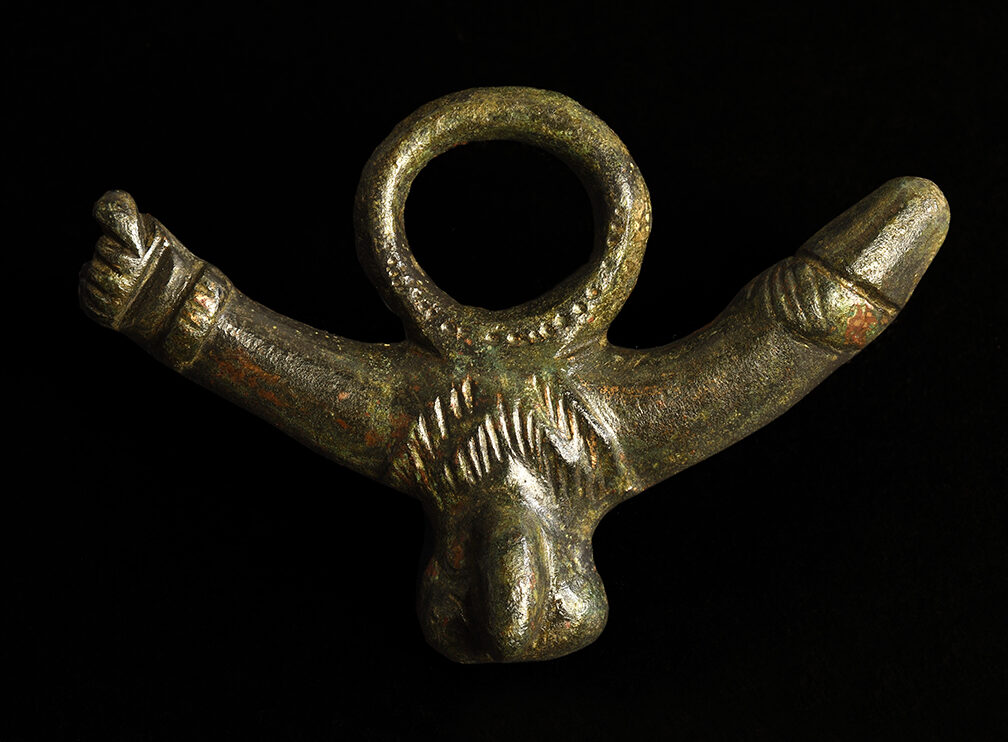
Bronze
1st-2nd c. AD
Empúries (L’Escala – Alt Empordà)
Amulets with phallic representations from the Roman period come in all shapes and sizes. This example is one of the most common types. It has been designated cum scroto pubeque. At the top it has a suspension ring. Below, on the right side, an erect phallus and on the left an arm with the hand depicting the fig (closed fist with the thumb protruding between the index and middle finger), the representation of the female sexual organ and the sexual act. In the lower central part, the male sexual organ is seen from the front with the penis at rest, the testicles and small incisions representing pubic hair.
This amulet was brought to the museum from Empúries in 1920, It is moulded bronze about 8 cm wide and 5 cm high.
Despite their undeniable carnal nature, these small objects had no sexual connotations. They were amulets for protection against the “evil eye” and were worn around the neck, on the wrist or in other positions.
A text by Varró has suggests that small versions of this type of amulet were also hung around children’s necks, although the child’s amulet par excellence was the bulla.
The apotropaic (protective) nature of the phallus is what explains its constant presence in non-sexual environments in the Roman world. Let us remember, for example, what is carved into an ashlar near the entrance gate in the Roman wall of Empúries.
As for children, small jet amulets representing the fig are very commonly sold and are still today hung around the necks of newly born children in order to protect them, as attested by an anthropological study carried out by the University of Jaén.
